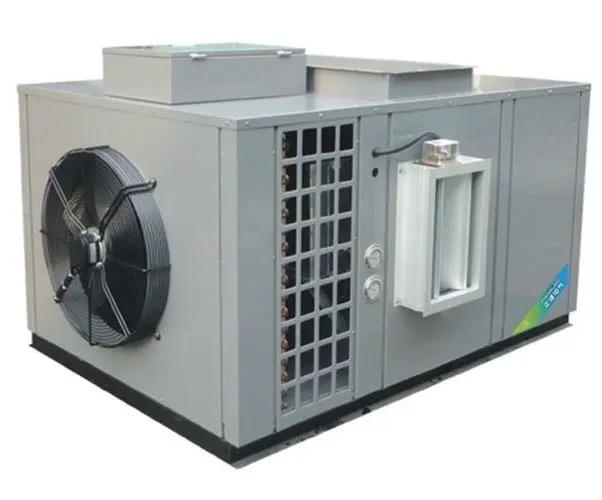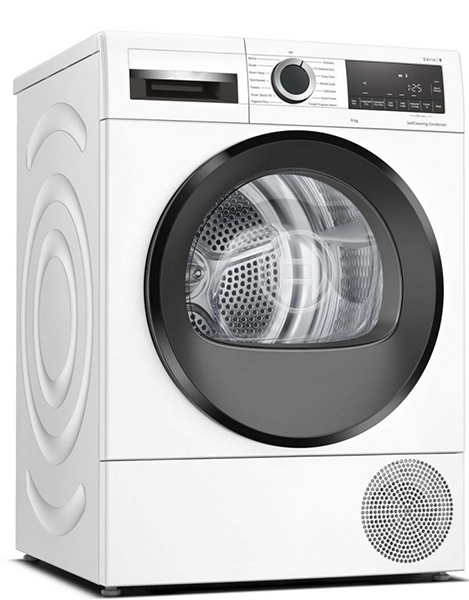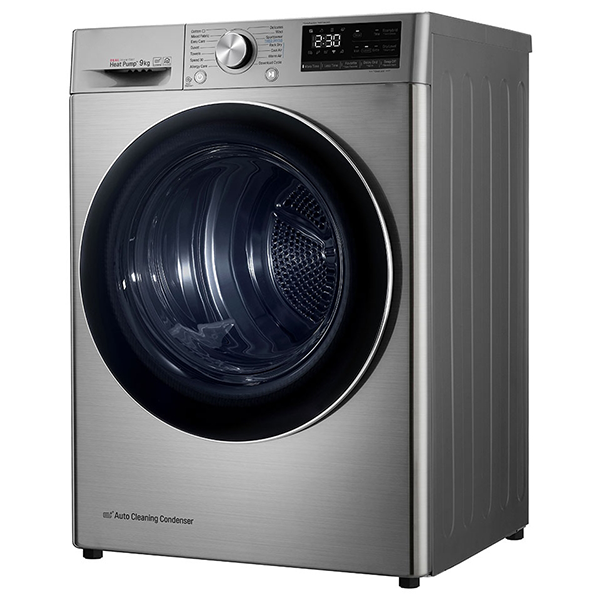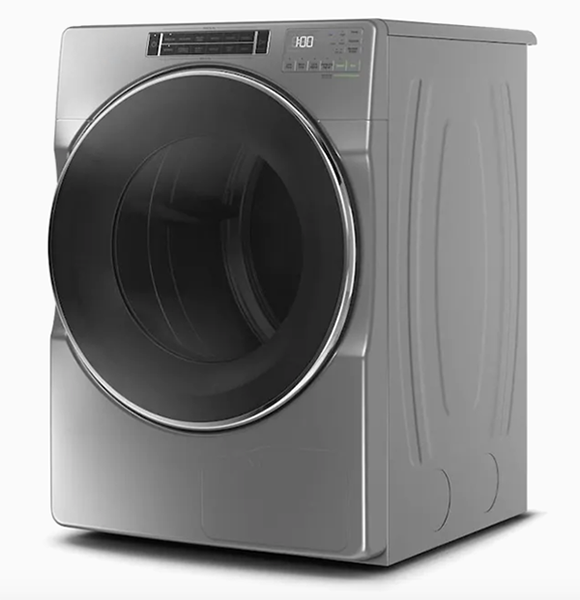
Content Menu
● Introduction to Heat Pump Dryer Technology
● Understanding Heat Pump Dryer Technology
>> How Heat Pump Dryers Work
● Heat Pump vs Traditional Dryer: A Comparison
>> Traditional Dryers
>> Heat Pump Dryers
● Benefits of Heat Pump Dryers
>> 1. Energy Savings
>> 2. Gentle on Clothes
>> 3. No Need for External Venting
>> 4. Improved Indoor Air Quality
>> 5. Advanced Features
● Best Heat Pump Dryer Models
● Heat Pump Dryer Installation and Maintenance
>> Installation Tips
>> Maintenance for Longevity
● Heat Pump Dryer Pros and Cons
>> Pros:
>> Cons:
● The Future of Laundry: Heat Pump Dryers
● Frequently Asked Questions
>> 1. How much energy can I save with a heat pump dryer?
>> 2. Are heat pump dryers worth the higher cost?
>> 3. How long do heat pump dryers take to dry clothes?
>> 4. Do heat pump dryers require special installation?
>> 5. How long do heat pump dryers last?
Introduction to Heat Pump Dryer Technology
In recent years, the laundry appliance market has seen a revolutionary innovation in the form of heat pump dryers. These advanced machines are changing the way we think about drying clothes, offering a more energy-efficient and gentle alternative to traditional dryers. But what exactly is a heat pump dryer, and how does it work? In this comprehensive guide, we'll explore the technology behind heat pump dryers, their benefits, and why they might be the perfect addition to your home.
Understanding Heat Pump Dryer Technology
Heat pump dryers utilize a sophisticated system that sets them apart from conventional dryers. At the core of this technology is a heat pump, which is essentially a device that transfers heat from one place to another. In the context of a clothes dryer, this system works to efficiently dry your clothes while consuming less energy.
How Heat Pump Dryers Work
The process of drying clothes in a heat pump dryer involves several key steps:
1. Air Circulation: The dryer begins by circulating air through the drum containing your wet clothes.
2. Moisture Extraction: As the air passes through the drum, it picks up moisture from the clothes.
3. Heat Exchange: The moist air then enters a heat exchanger, where it's cooled. This causes the moisture to condense into water, which is collected in a tank or drained away.
4. Reheating: The now-dry air is reheated by the heat pump and circulated back into the drum to continue the drying process.
5. Continuous Cycle: This process repeats until the clothes are fully dry.
This closed-loop system is what makes heat pump dryers so efficient. Unlike traditional dryers that expel hot, moist air, heat pump dryers recycle the air, retaining much of the heat energy throughout the drying cycle.

Heat Pump vs Traditional Dryer: A Comparison
To truly appreciate the advantages of heat pump dryers, it's essential to understand how they differ from traditional dryers.
Traditional Dryers
Conventional dryers typically use one of two methods:
1. Vented Dryers: These dryers heat air using a heating element and blow it through the drum. The moist air is then vented outside.
2. Condenser Dryers: These units condense the moisture from the air into water but still use a heating element to generate hot air.
Both types consume a significant amount of energy to generate heat and often operate at high temperatures, which can be harsh on fabrics.
Heat Pump Dryers
In contrast, heat pump dryers:
1. Use lower temperatures to dry clothes, which is gentler on fabrics.
2. Consume less energy by recycling heat.
3. Don't require external venting, offering more flexibility in placement.
4. Often have longer drying times but compensate with energy efficiency.
Benefits of Heat Pump Dryers
The advantages of heat pump dryers extend beyond just energy efficiency. Let's explore the key benefits that make these appliances an attractive option for modern households.
1. Energy Savings
Perhaps the most significant advantage of heat pump dryers is their energy efficiency. These dryers can use up to 50% less energy compared to conventional dryers. This translates to lower electricity bills and a reduced carbon footprint, making them an excellent choice for environmentally conscious consumers.
2. Gentle on Clothes
The lower operating temperatures of heat pump dryers are kinder to fabrics. This means less wear and tear on your clothes, helping them last longer and maintain their quality. Delicate items that you might typically air dry can often be safely dried in a heat pump dryer.
3. No Need for External Venting
Unlike traditional vented dryers, heat pump dryers don't require an exhaust vent to the outside. This offers greater flexibility in terms of where you can install the dryer in your home. It's particularly beneficial for apartments or homes where external venting is challenging or impossible.
4. Improved Indoor Air Quality
Because heat pump dryers don't expel air, they don't release lint and other particles into your home or the environment. This can contribute to better indoor air quality, especially beneficial for those with allergies or respiratory issues.
5. Advanced Features
Many heat pump dryers come equipped with smart features such as moisture sensors, which can detect when clothes are dry and automatically stop the cycle. This prevents over-drying and further reduces energy consumption.

Best Heat Pump Dryer Models
The market for heat pump dryers has grown significantly, with many major appliance manufacturers now offering high-quality models. Some of the top brands and models to consider include:
1. LG: Known for their innovative technology and reliability.
2. Miele: Offers premium models with excellent build quality.
3. Bosch: Provides a range of efficient and feature-rich heat pump dryers.
4. Samsung: Combines performance with stylish design.
5. Whirlpool: Offers affordable heat pump dryer options without compromising on quality.
When choosing a heat pump dryer, consider factors such as capacity, energy rating, additional features, and price to find the model that best suits your needs.
Heat Pump Dryer Installation and Maintenance
Installing a heat pump dryer is generally straightforward, especially since there's no need for external venting. However, there are a few key considerations:
Installation Tips
1. Ensure adequate space: Heat pump dryers may be slightly larger than traditional models.
2. Proper leveling: The dryer should be level to function correctly.
3. Drainage: Set up either a drain hose or ensure easy access to the water collection tank.
4. Electrical requirements: Check that your electrical system meets the dryer's needs.
Maintenance for Longevity
To keep your heat pump dryer running efficiently:
1. Clean the lint filter after every use.
2. Regularly clean the heat exchanger (usually every 20-30 cycles).
3. Empty the water collection tank if not using a direct drain.
4. Clean the moisture sensors periodically to ensure accurate readings.
5. Schedule professional maintenance as recommended by the manufacturer.
Proper maintenance not only ensures optimal performance but also extends the lifespan of your appliance.
Heat Pump Dryer Pros and Cons
While heat pump dryers offer numerous advantages, it's important to consider both the pros and cons before making a purchase decision.
Pros:
1. Significant energy savings
2. Gentle on clothes
3. No need for external venting
4. Improved indoor air quality
5. Advanced features and smart technology
Cons:
1. Higher initial cost compared to traditional dryers
2. Longer drying times
3. May require more maintenance
4. Larger size may not fit in all laundry spaces
5. Performance can be affected in very cold environments
The Future of Laundry: Heat Pump Dryers
As energy efficiency becomes increasingly important in our daily lives, heat pump dryers represent a significant step forward in laundry technology. Their ability to dramatically reduce energy consumption while providing gentle care for clothes makes them an attractive option for many households.
While the initial investment may be higher, the long-term savings on energy bills and the extended life of your clothes can make heat pump dryers a cost-effective choice. As technology continues to advance, we can expect to see even more efficient and feature-rich models entering the market.
For those looking to reduce their environmental impact, lower their energy bills, and take better care of their clothes, a heat pump dryer is certainly worth considering. As with any major appliance purchase, it's important to assess your specific needs, budget, and space constraints to determine if a heat pump dryer is the right choice for your home.

Frequently Asked Questions
To wrap up our comprehensive guide on heat pump dryers, let's address some common questions:
1. How much energy can I save with a heat pump dryer?
Answer: Heat pump dryers can save up to 50% of the energy used by conventional dryers. The exact savings depend on your usage patterns and local energy costs, but many users report significant reductions in their electricity bills.
2. Are heat pump dryers worth the higher cost?
Answer: While heat pump dryers have a higher upfront cost, they can be worth the investment due to long-term energy savings and gentler treatment of clothes. If you do a lot of laundry or live in an area with high electricity rates, the savings can be substantial over time.
3. How long do heat pump dryers take to dry clothes?
Answer: Heat pump dryers generally take longer to dry clothes compared to traditional dryers. A typical cycle might take 90-120 minutes, whereas a conventional dryer might take 45-60 minutes. However, the energy savings and gentler drying process often outweigh this drawback for many users.
4. Do heat pump dryers require special installation?
Answer: Heat pump dryers don't require special installation in terms of venting, as they don't need to be vented to the outside. However, they may need more space than traditional dryers and require proper leveling and drainage setup.
5. How long do heat pump dryers last?
Answer: With proper maintenance, heat pump dryers can last 10-15 years or more. Their lifespan is often longer than traditional dryers due to the lower operating temperatures and gentler drying process.By understanding the technology, benefits, and considerations of heat pump dryers, you can make an informed decision about whether this innovative appliance is the right choice for your laundry needs. As we move towards a more energy-conscious future, heat pump dryers stand out as a promising solution for efficient and effective clothes drying.












